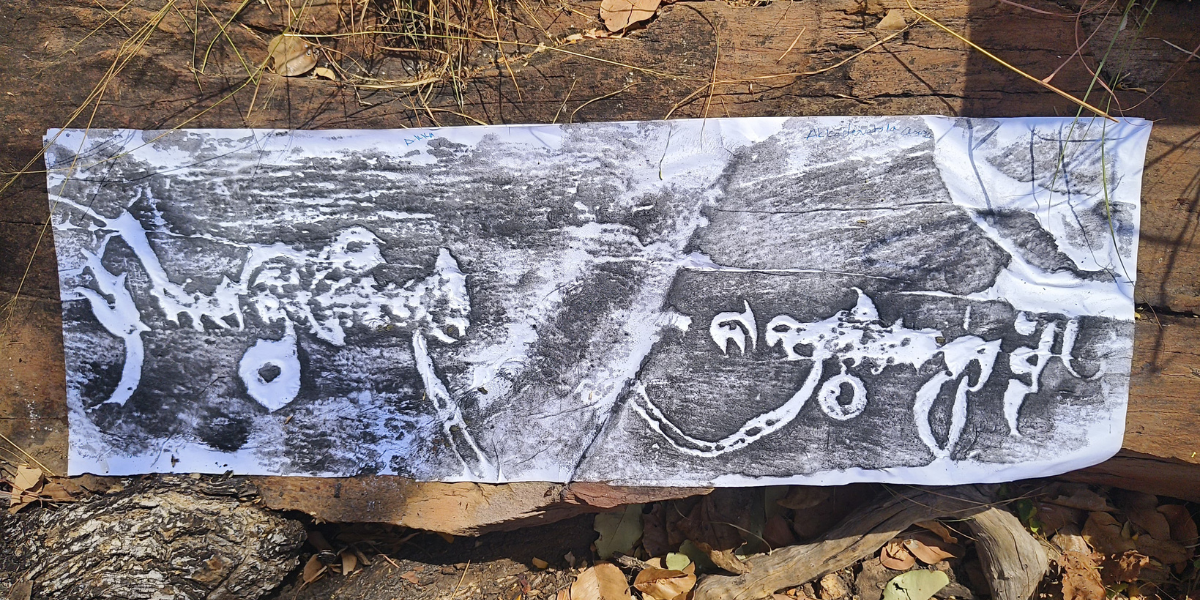The discovery suggests the presence of an ancient pilgrimage route predating the renowned Srisailam temple, located roughly 150 km north of the site.
Published Mar 04, 2025 | 7:00 AM ⚊ Updated Mar 04, 2025 | 7:56 AM

Ancient inscriptions found in Kadapa's Lankkamala Reserve Forest
Synopsis: The Archaeological Survey of India has discovered 4th and 6th-century CE inscriptions and paintings in Andhra Pradesh’s Lankkamala Reserve Forest, shedding light on an ancient Shaivite pilgrimage route predating the renowned Srisailam temple. The inscriptions, written in Brahmi, Shell, Nāgari, and Telugu scripts, mark the first recorded instance of 16 Shell inscriptions found in a single location in the wild.
The Archaeological Survey of India (ASI) has found inscriptions and paintings dating to the 4th and 6th centuries CE in Lankkamala Reserve Forest in Andhra Pradesh’s Kadapa district.
The discovery suggests the presence of an ancient pilgrimage route predating the renowned Srisailam temple, located roughly 150 km north of the site.
The inscriptions are in Brahmi, Shell, Nāgari, and Telugu scripts. This is the first time 16 Shell inscriptions were found in the same place in the region, and the first time such inscriptions were found in the wild.
#AndhraPradesh: The Archaeological Survey of India discovered inscriptions in Kadapa’s Lankkamala Reserve Forest South of #Srisailam.
The survey, which took place from 27 February to 1 March, revealed nearly 30 inscriptions in Nityapujakona, Akkādēvatala Konda, Gopalaswami… pic.twitter.com/7asb0mWGft
— South First (@TheSouthfirst) March 3, 2025
“We found scripts dating back to the 4th Century and 6th Century CE atop these hills. It’s a landmark discovery for the ASI which tells us more about the culture of the period,” K Munirathnam, Director of Epigraphy at the ASI, told South First.
“All the label inscriptions indicate the pilgrimage route in ancient periods. Inscriptions are written in Brahmi (4th Century CE), Shell (6th Century CE), Nāgari (Sanskrit) and Telugu characters,” he added.
The survey covered Nitya Puja Kona, Akkadevathala Konda, Gopalaswami Kona, and Bandigani Chella. “The existence of the Shell script at the location could imply that this pilgrimage route was also frequented by people from the Northern regions of India,” he said.
“This is a Shaivite region, and these inscriptions praising Lord Shiva might indicate that this was around the original pilgrimage site which moved to Srisailam in the later centuries,” he explained. “The inscriptions here could mean that this might’ve been the earlier pilgrimage site for the Shaivite population before the 4th Century CE. However, this site of pilgrimage slowly started shifting away from Lankkamala since then.”
The Brahmi inscriptions have been deciphered, and work is ongoing on the Shell inscriptions.
Munirathnam added that the inscriptions refer to Shiva using different names, similar to those at Srisailam, which remains a major pilgrimage site.
B Kalavathi, a Siddavatam Forest Range Officer, first found the inscriptions in September 2024 during a combing operation against Red Sanders smuggling.
She later found paintings in a cave on Bandigani Chella in December. She forwarded images of the discoveries to Munirathnam in late January after conferring with senior officials.
“Kalavathi sent me some pictures of the inscriptions. Identifying them as belonging to the 4th Century CE Brahmi script, we immediately wrote to the Deputy Chief Minister and Forest Minister, Pawan Kalyan seeking permission,” Munirathnam told South First.
Once permission was granted, a six-member ASI team from Mysore travelled to Lankkamala Reserve Forest.
“My team and I had to trek various hills through dangerous forests going up 2,200, and 2,500 feet. The trek was steep and none of us could sit along the way, if you did you were likely to fal,” Munirathnam added.
Kalavathi led the ASI team through the forest for three days.
“On the first day, we trekked up 2,200 feet on Gopalasami Konda to copy about 12 inscriptions. On day two, we went up higher. trekking 2,500 feet to Akkadevathala Konda to record another 15 inscriptions,” she said.
“Day two was especially strenuous, with its steep slope and rough terrain, it proved hard on the legs.”
The ASI has documented the inscriptions, but their long-term preservation remains a concern. “We have a management plan for 10 years. We have proposed some measures this year to develop this area,” Kalavathi informed South First.
Noting that the local Yanadhi and Erukula tribes revere such locations, forest officials have proposed to preserve the sites.
“These architectural marvels are not just structures, they are repositories of ancient wisdom, traditions, and craftsmanship,” officials from the Forest Department said.
The department further noted that the inscriptions were an “irreplaceable link to our collective human history,” and pushed for conservation measures to ensure there is no unnatural damage to the sites from vandalism. Furthermore, the department said the sites could eventually be used for educating people.
“I understand that not everyone would want to trek up that high to look at the inscription. However, we need to take measures to ensure that those who are interested can,” Kalavathi said.
(Edited by Dese Gowda)
